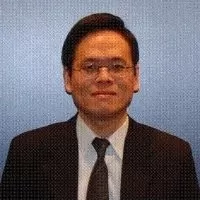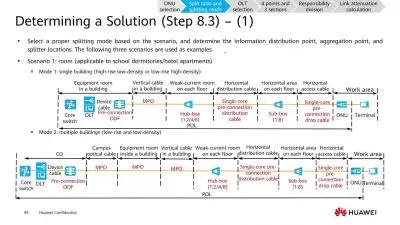Multiple-Input-Multiple-Output (MIMO) Antenna Systems
Benny Bing
1:21:07
Description
A Comprehensive Study
What You'll Learn?
- Learn the basics of antenna transmission and spatial diversity
- Review the benefits and differences between transmit and receive diversity
- Understand the MIMO channel and code matrices
- Identify the differences between space time block coding and spatial multiplexing
- Design and optimize beamforming antenna systems and different beamforming configurations in multi-user communications
- Identify the differences between open-loop and closed-loop MIMO
- Analyze signal combining and performance of multiple antenna systems
Who is this for?
What You Need to Know?
More details
DescriptionThe use of multiple antennas forms the basis of high-speed wireless systems. Multiple input multiple output (MIMO) systems take advantage of multipath RF propagation to create multiple versions of the same signal, which increases the chances that the data will reach the receiving antenna without being affected by signal fading. This course provides a comprehensive overview of state-of-the art MIMO antenna systems. It is intended for practicing engineers, researchers, and students.
Learning Outcomes
Learn the basics of antenna transmission and spatial diversity
Review the benefits and differences between transmit and receive diversity
Understand the MIMO channel and code matrix
Study the beamforming antenna systems and the different beamforming configurations in multi-user communications
Identify the differences between open-loop and closed-loop MIMO
Analyze signal combining and performance of multiple antenna systems
About the Instructor
The instructor was a technical editor for the IEEE Wireless Communications Magazine for 10 years and has also guest edited for the IEEE Communications Magazine (2 issues) and the IEEE Journal on Selected Areas on Communications. His IEEE online tutorials were sponsored 8 times by industry. His research has appeared in the IEEE Spectrum and he received 2 IEEE best paper awards. He was invited by the National Science Foundation to participate in a workshop on Residential Broadband and received the National Association of Broadcasters Technology Innovation Award. He has also served as an IEEE Communications Society Distinguished Lecturer with 10 invited lectures worldwide as well as an expert witness.
Who this course is for:
- Antenna engineers
The use of multiple antennas forms the basis of high-speed wireless systems. Multiple input multiple output (MIMO) systems take advantage of multipath RF propagation to create multiple versions of the same signal, which increases the chances that the data will reach the receiving antenna without being affected by signal fading. This course provides a comprehensive overview of state-of-the art MIMO antenna systems. It is intended for practicing engineers, researchers, and students.
Learning Outcomes
Learn the basics of antenna transmission and spatial diversity
Review the benefits and differences between transmit and receive diversity
Understand the MIMO channel and code matrix
Study the beamforming antenna systems and the different beamforming configurations in multi-user communications
Identify the differences between open-loop and closed-loop MIMO
Analyze signal combining and performance of multiple antenna systems
About the Instructor
The instructor was a technical editor for the IEEE Wireless Communications Magazine for 10 years and has also guest edited for the IEEE Communications Magazine (2 issues) and the IEEE Journal on Selected Areas on Communications. His IEEE online tutorials were sponsored 8 times by industry. His research has appeared in the IEEE Spectrum and he received 2 IEEE best paper awards. He was invited by the National Science Foundation to participate in a workshop on Residential Broadband and received the National Association of Broadcasters Technology Innovation Award. He has also served as an IEEE Communications Society Distinguished Lecturer with 10 invited lectures worldwide as well as an expert witness.
Who this course is for:
- Antenna engineers
User Reviews
Rating
Benny Bing
Instructor's Courses
Udemy
View courses Udemy- language english
- Training sessions 5
- duration 1:21:07
- Release Date 2025/02/27










